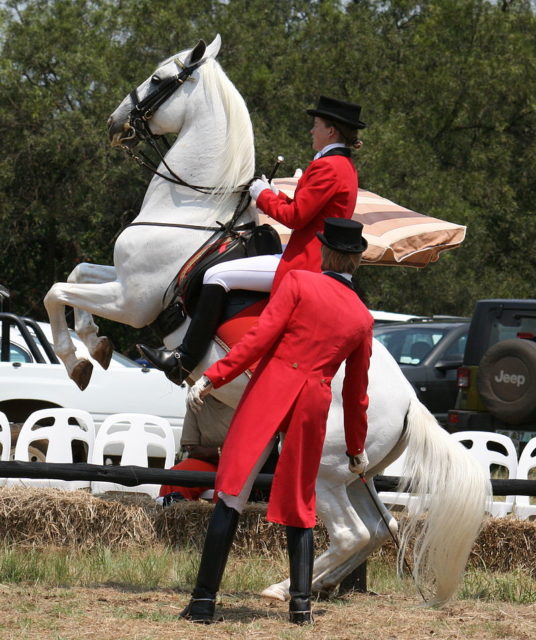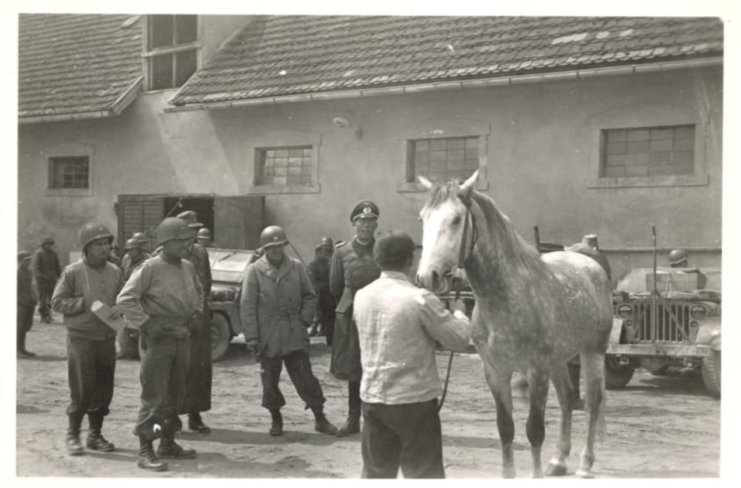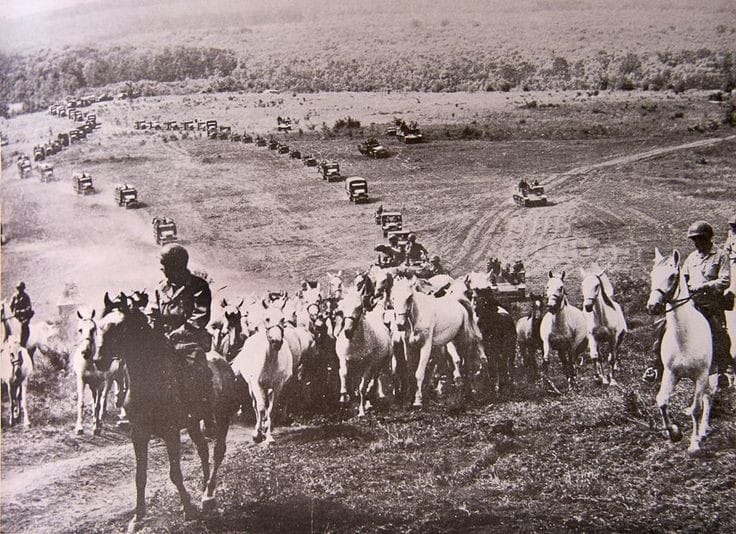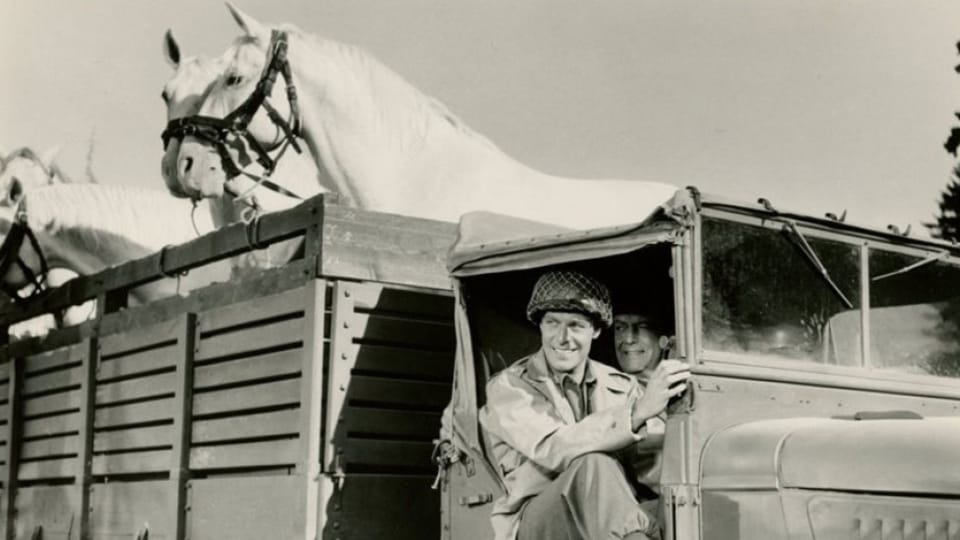As World War II wound to a close, just days before Adolf Hitler would take his own life in a bunker in Berlin, the 2nd Cavalry Group of the United States 3rd Army undertook a rescue operation unlike any other in the history of the war, to rescue some of the most valuable horses in the world.
In April 1945, Colonel Charles Hancock Reed, the commander of the 2nd Cavalry Group, was approached by two German officers. The 2nd Cavalry was preparing to rescue 400 Allied prisoners of war being held at Weißensulz in Sudeten. The German officers were veterinarians who begged the Americans to accept the surrender of the troops in the village and to rescue 250 Lipizzaner horses among others, including a horse that had belonged to German Foreign Minister Joachim von Ribbentrop and one that had belonged to the King of Yugoslavia, Petar.

The Lipizzaner are some of the most valuable horses in the world. They were bred for the Hapsburg royals in Spain to meet the need for military horses and for riding school. The Lipizzaner were recognized for their beauty, intelligence and sturdiness. They are almost pure white horse and are capable of performing intricate and precise riding maneuvers.
The Germans were concerned about reports that the Red Army of the Soviet Union had captured other valuable horses and killed (and sometimes eaten) them. Colonel Reed, having begun his military career in the cavalry, riding horses, was eager to save the horses. He said after the war that he was tired of the violence and inhumanity and wanted to “do something beautiful.”
The Lipizzaner horses in Weißensulz were worth an estimated $3 million (US). Colonel Reed issued the command to save the horses in what was coined “Operation Cowboy.” The 42nd Squadron was put in charge of the operation.
There is a persistent myth that General George S. Patton issued the order to rescue the horses since he commanded the 3rd Army but historian Jindřich Marek from the Military History Institute in Prague states that there is no evidence that Patton was aware of the operation until it had already been carried out.
The horses were being kept in the nearby village of Hostouň to protect them from Allied bombing runs. The first Americans to reach Hostouň were a platoon of 28 troops and another platoon of five M-24 Chaffee light tanks. They reached the village on April 28th while the rest of the 42nd went on to rescue the prisoners of war.

The German soldiers in Hostouň surrendered without a fight and the Americans took possession of the horses. Some were sent to Bavaria, some to Austria (where the Germans had originally seized them) and some were kept by the Americans though they were eventually given to various countries including Czechoslovakia.
In 1963, Disney made a film about the operation called “Miracle of the White Stallions.” But Communist Czechoslovakia essentially erased any reference to the event.

In 2006, though, the mayors of Hostouň a Bělá nad Radbuzou asked historian Richard Praus to write a memorial plaque for a commemoration of Operation Cowboy.
That commemoration continues to be an annual celebration in the town. Members of the 42nd Cavalry Regiment always take part in the festivities. Even when they were stationed in Afghanistan or Iraq, someone would be sent to raise the flag at the commemoration every year.
Another Article From Us: The Highest Award for Valor on D-Day: Is it Time to Correct this 75-year-old Injustice?
Some of the descendants of those Lipizzaner horses are part of the Spanish Riding School of Vienna.
